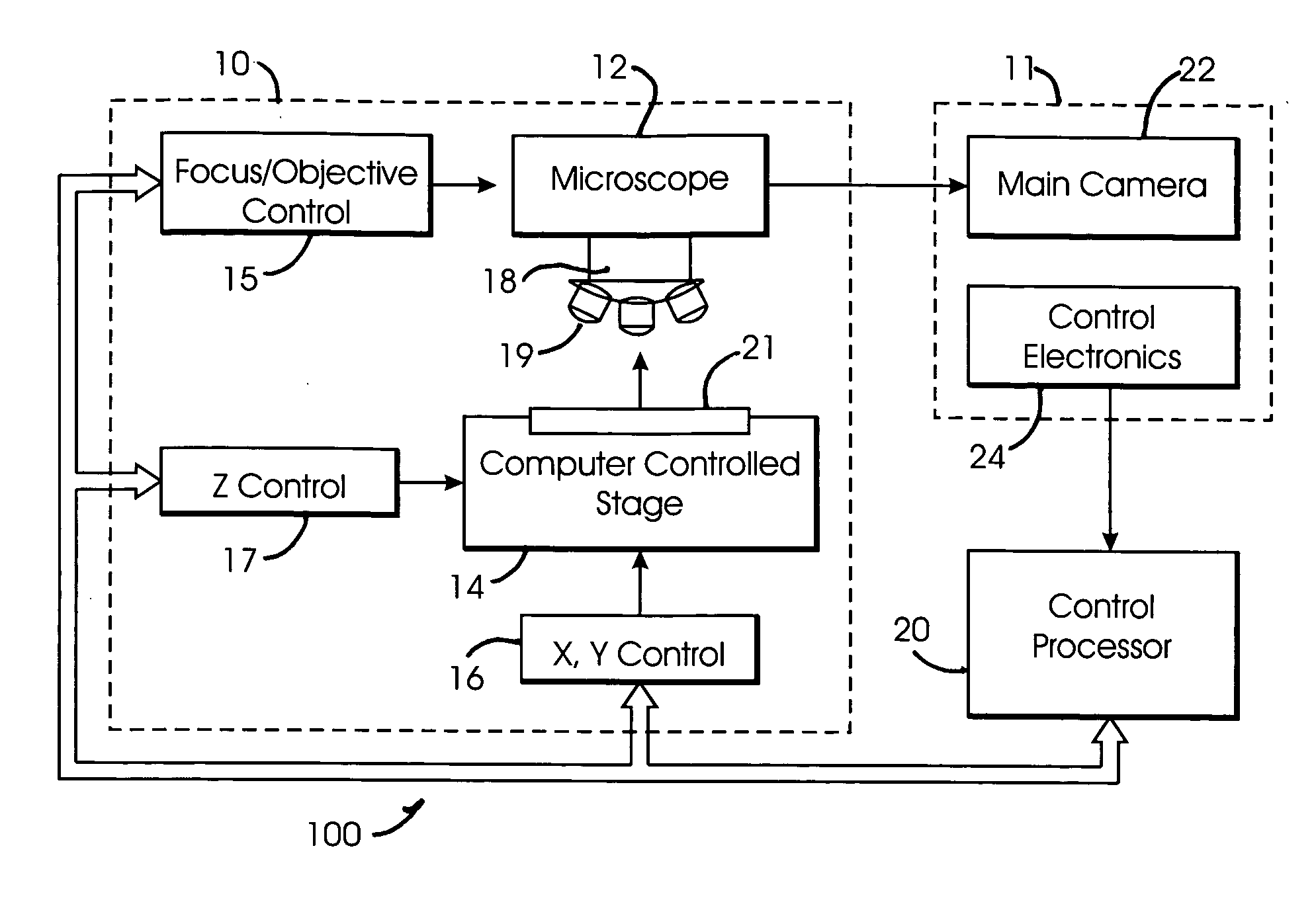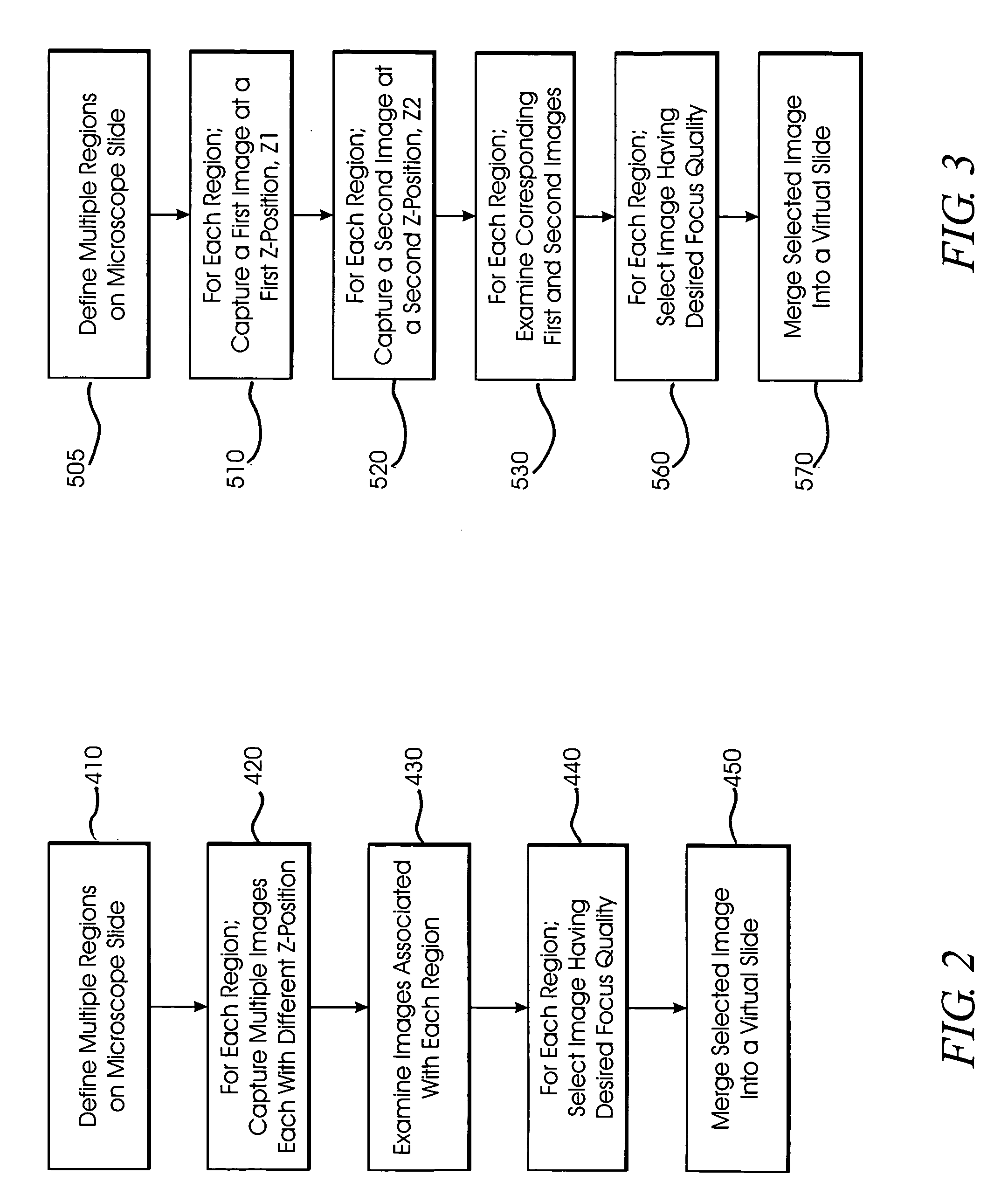System and method for creating magnified images of a microscope slide
a microscope slide and magnifying technology, applied in the field of microscope slide magnifying technology, can solve the problems of insufficient information for the first sequence of images, the inability to capture an entire slide in focus using a fixed vertical, or z-position, and the existing start/stop acquisition system, as described above, to achieve the effect of optimal image quality characteristics
- Summary
- Abstract
- Description
- Claims
- Application Information
AI Technical Summary
Benefits of technology
Problems solved by technology
Method used
Image
Examples
Embodiment Construction
[0030] A virtual microscope slide typically comprises digital data representing a magnified image of all, or a portion of, a microscope slide. Because the virtual slide is in digital form, it can easily be stored on a digital storage medium, such as in the form of an image file in a computer memory, or on a disk drive, a CD ROM, or the like, and can easily be transmitted as a digital file over a communication network, such as the Internet, an intranet, etc., to a suitable viewer at a remote location.
[0031] The various embodiments, described herein, provide improved systems and methods for obtaining in-focus images of desired portions of a microscope slide and further provide improved systems and methods for combining the in-focus images in order to create a complete virtual slide. In one aspect of a an exemplary embodiment of the invention, multiple regions of a microscope slide are defined, multiple images of each region are captured and, for each defined region, an image having a...
PUM
 Login to View More
Login to View More Abstract
Description
Claims
Application Information
 Login to View More
Login to View More - R&D
- Intellectual Property
- Life Sciences
- Materials
- Tech Scout
- Unparalleled Data Quality
- Higher Quality Content
- 60% Fewer Hallucinations
Browse by: Latest US Patents, China's latest patents, Technical Efficacy Thesaurus, Application Domain, Technology Topic, Popular Technical Reports.
© 2025 PatSnap. All rights reserved.Legal|Privacy policy|Modern Slavery Act Transparency Statement|Sitemap|About US| Contact US: help@patsnap.com



